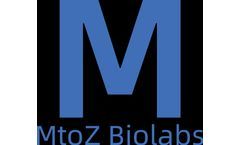Refine by
Drug Testing Articles & Analysis
42 articles found
Researchers can manipulate these cells genetically, test drug responses, and explore the effects of various environmental factors on ovarian health. ...
In our last blog, Peter discussed how AI is accelerating the drug discovery process and putting pressure on chemists, who must find ways of developing these potential drugs for subsequent testing or production. ...
ByBUCHI
For instance, larger animals such as dogs or pigs are often preferred in the study of cardiology, while zebrafish provide a rapid assessment of pharmacokinetics and toxicity. Phases of Drug Screening Drug screening typically unfolds in several key phases: Preclinical Testing: Before any drug can enter human trials, it undergoes ...
In the realm of pharmaceutical research and development, ADME testing services play a pivotal role in evaluating the pharmacokinetics of drug candidates. ...
These cell lines serve as essential models for studying the biology of colorectal cancer, testing new therapies, and exploring the mechanisms of drug resistance. ...
Alfa Cytology has introduced its advanced drug development services for brain tumors. Alfa Cytology, celebrated for its cutting-edge biotech solutions and extensive tumor research expertise, has recently introduced brain tumor drug development services, designed to empower researchers in understanding the intricacies and unique challenges associated with brain ...
Applications: Research: Mapping the architecture and alterations in the cytoskeleton in various diseases. Drug Discovery: Observing how pharmaceuticals affect cytoskeletal integrity. ...
Drug antibody testing is a laboratory testing method specifically designed to evaluate the immune response of the human body to certain drugs. ...
Binding Activity Testing(1) Enzyme-Linked Immunosorbent Assay (ELISA)Uses the target antigen coated on microtiter plates to test the binding ability of the antibody drug.(2) Surface Plasmon Resonance (SPR)Can detect the binding between the antibody and the target molecule in real-time, and determine the rate constants for binding and ...
Each type of nanoparticle has unique properties that can be tailored to suit specific drug delivery needs. For instance, liposomes are ideal for encapsulating hydrophilic drugs, while solid lipid nanoparticles are suitable for enhancing the bioavailability of hydrophobic drugs. ...
However, one of the challenges faced in developing small molecule drugs to treat brain cancer is the blood-brain barrier, a protective barrier that prevents many drugs from reaching their targets in the brain. Researchers are still investigating strategies to overcome this barrier, similar to the use of nanoparticles or other drug delivery ...
The cells can be used as model systems in phenotypic and drug screening, high content analysis, target identification, drug development, toxicology testing, gene editing studies, reporter assays. ...
One of the first steps in drug development and toxicity testing is creating cell models on which to evaluate the effects of chemical compounds on cellular, molecular and biochemical processes of interests. ...
The selection of hyaluronic acid, which improves the swelling capacity of the prescription and increases the speed of drug release and transdermal absorption efficiency. The use of hydrophobic mold material to prepare microneedles maintains the integrity of the needle shape and the uniformity of drug loading. Full analytical testing of ...
Drug development is a complex and multifaceted process that involves extensive research and testing to ensure safety, efficacy and quality for human use. ...
This could revolutionize the field of organ transplantation and offer hope to patients with organ failure. Drug testing: Bioprinted tissues can be used to test new drugs and therapies in a more realistic and humane way than traditional animal models. ...
ByMatexcel
With the development of personalized medicine, this applies increasingly to the development and safety testing of drugs. Currently, primary cells are used for these purposes. ...
Drug development is a complex and multifaceted process that involves extensive research and testing to ensure safety, efficacy and quality for human use. ...
The ability to influence the differentiation of iPSCs, combined with the fact they can be generated from patients’ own cells, has opened intriguing possibilities for patient-specific drug testing, disease modeling, and therapeutic transplantation. In the pursuit of harnessing the potential of iPSCs, iPSC differentiation kits have emerged as critical tools. ...
Advantages of Single-Cell RNA Sequencing in Drug Discovery Single-Cell RNA Sequencing (scRNA-seq) offers several advantages in drug discovery, primarily through target identification. ...










